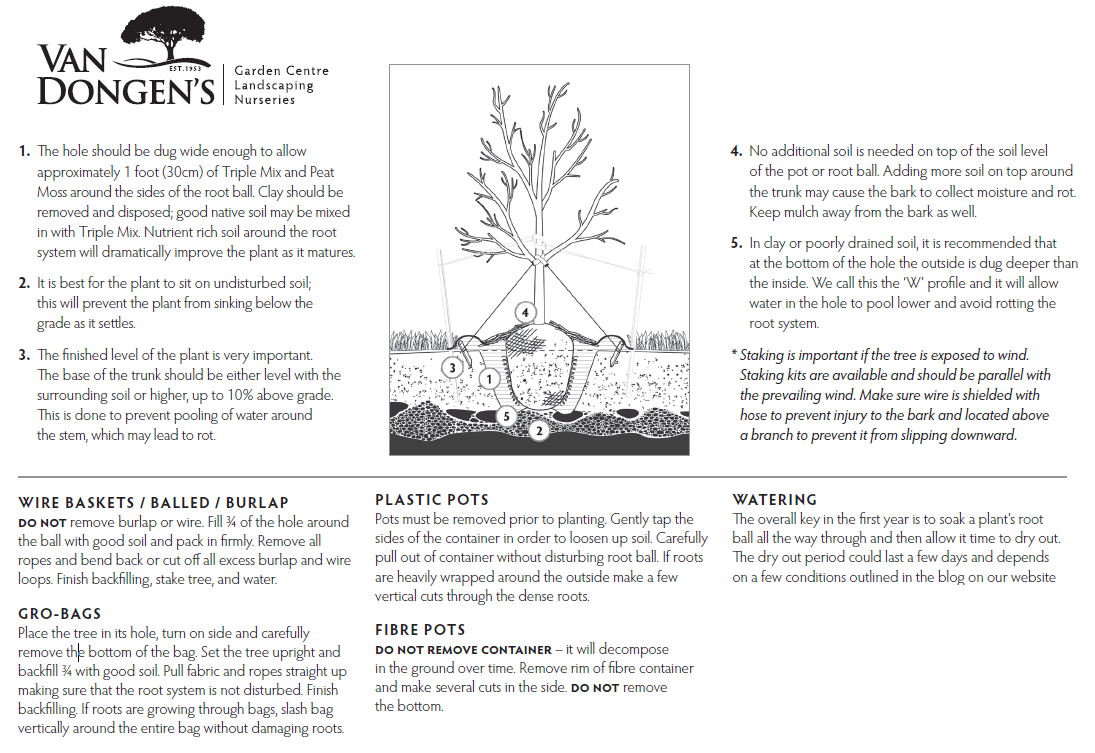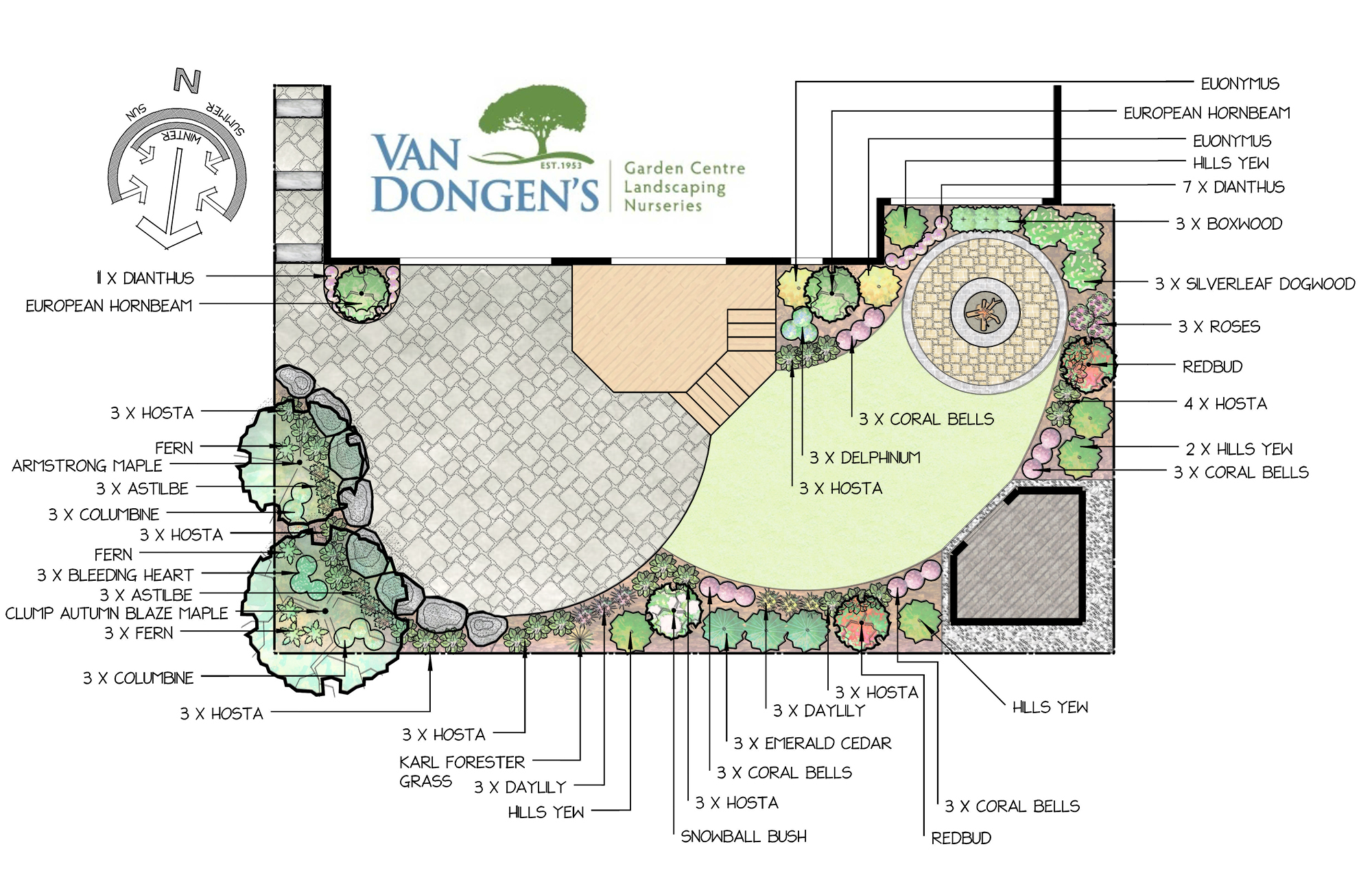Van Dongen's News & Tips
-
-
Posted: July 10, 2020Views: 120Read more »
Cedar/Evergreen Privacy Hedging
https://www.vandongens.com/blog/post/cedarevergreen-privacy-hedging
Cedar Flagging
https://www.vandongens.com/blog/post/cedar-flagging
Lawn Fertilizing
https://www.vandongens.com/blog/post/lawn-fertilizing
Long-Blooming Perennials
https://www.vandongens.com/blog/post/long-blooming-perennials
Maple Gall Mite
https://www.vandongens.com/blog/post/maple-gall-mite
Nematodes
https://www.vandongens.com/blog/post/nematodes
Pool Planting Tips
https://www.vandongens.com/blog/post/pool-planting-tips
Tree Selection
https://www.vandongens.com/blog/post/tree-selection
Working in a Small Space
https://www.vandongens.com/blog/post/working-in-a-small-space
Watering Newly Planted Trees
https://www.vandongens.com/blog/post/watering-newly-planted-trees
-
Read more »
A concern that many of our home-owning clients bring to us is how they can achieve and maintain a lush green lawn, especially in the heat of the summer. The fertilizer that we stock here at Van Dongen’s is Agromart ‘Magic Carpet’ Fertilizer. We usually recommend the 25-5-10 formulation. What do these numbers mean, exactly?
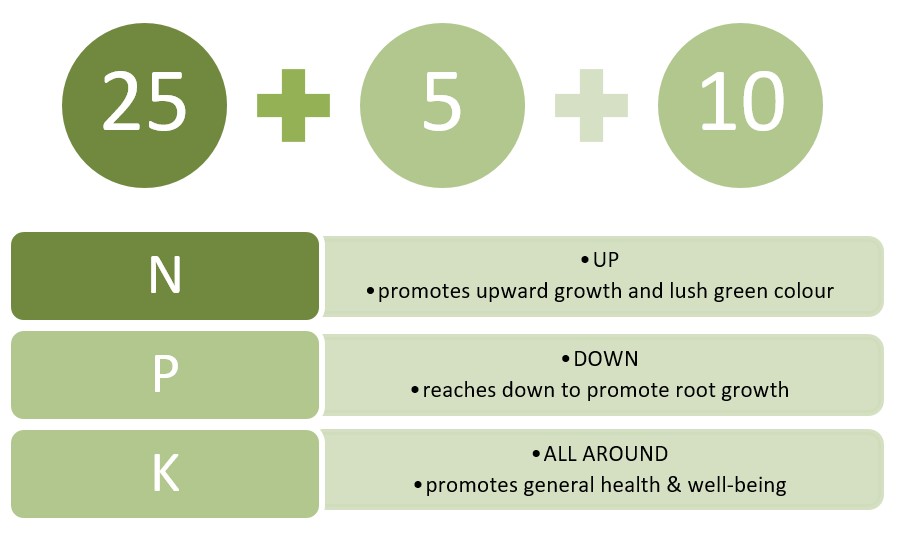
Product
Magic Carpet is a strong slow-release fertilizer. It is not diluted, but it is a slow-release nature prevents it from burning your lawn. The strong commercial grade wax coating (XCU= 65%) on the granules allows it to break down slowly over time, usually taking 6-8 weeks to completely dissolve. This means that you can overseed simultaneously without fear of burning!
Application

If you are overseeding or seeing a new lawn, good soil is very important. We have a specialty soil called Viva Lawn Repair, which is very finely screened. This soil contains peat loam, an important ingredient for germination of new seed.
Magic Carpet fertilizer is commercial grade that should be used every 6-8 weeks, whether you have existing grass or newly placed seed. You will require about 4lbs of Magic Carpet for every 1000 square feet of lawn you hope to fertilize. Our Magic Carpet bags are 2
-
Read more »
Our largest number of inquiries is in regard to the type of cedar to use as a privacy hedge. Many new properties have been/are being developed on smaller lots thus requiring options to provide privacy while taking up as little yard space as possible. Cedars are a versatile plant that is both attractive and functional and requires relatively little maintenance. They do well in full sun to partial shade and have a shallow, fibrous root system that makes them the ideal tree for planting around a pool or any other location with underground obstacles. The roots tend to go around objects, such as fence posts, rather than disturbing them.

There is the common misconception that cedars attract mosquitoes. Cedars tend to grow in moist conditions, just the type of environment mosquitoes thrive in. It is the case of the environment causing the mosquitoes to breed, not the cedars. The key to eliminating mosquitoes is to remove standing water from a property if possible. Low areas with improper drainage and rain barrels are two of the most common breeding zones.
There are four options available that will provide the desired result and all share the same basic requirements in terms of habitat. Average to moist soil conditions is preferred and the tree shouldn’t be allowed to dry out. No specific pH or soil type is necessary and cedars are mostly t
-
Read more »
Smooth Hydrangeas
Hydrangea arborescens, also known as Smooth Hydrangea, are known for their reliable blooms. These hydrangeas bloom on “new wood”—the current season’s growth. You should prune them back in late winter or early spring. Pruning them back will encourage new growth, which helps the plant to produces flowers. Spring pruning will also result in a stronger fuller plant that is less likely to flop over under the weight of its abundant summer flowers. Cutting the stems back to one or two feet will leave a good framework to support the blooms.
There are two new Hydrangea arborescens ‘Annabelle’ which have stronger stems that won’t flop. They are:
- Hydrangea arborescens ‘Invincibelle Spirit II’ which is the very first pink-flowering form of ‘Annabelle’. It produces new pink flowers right up to frost.
- Hydrangea arborescens ‘Incrediball’ has the biggest flowers and has the strongest stems of any of the ‘Annabelle’ varieties.
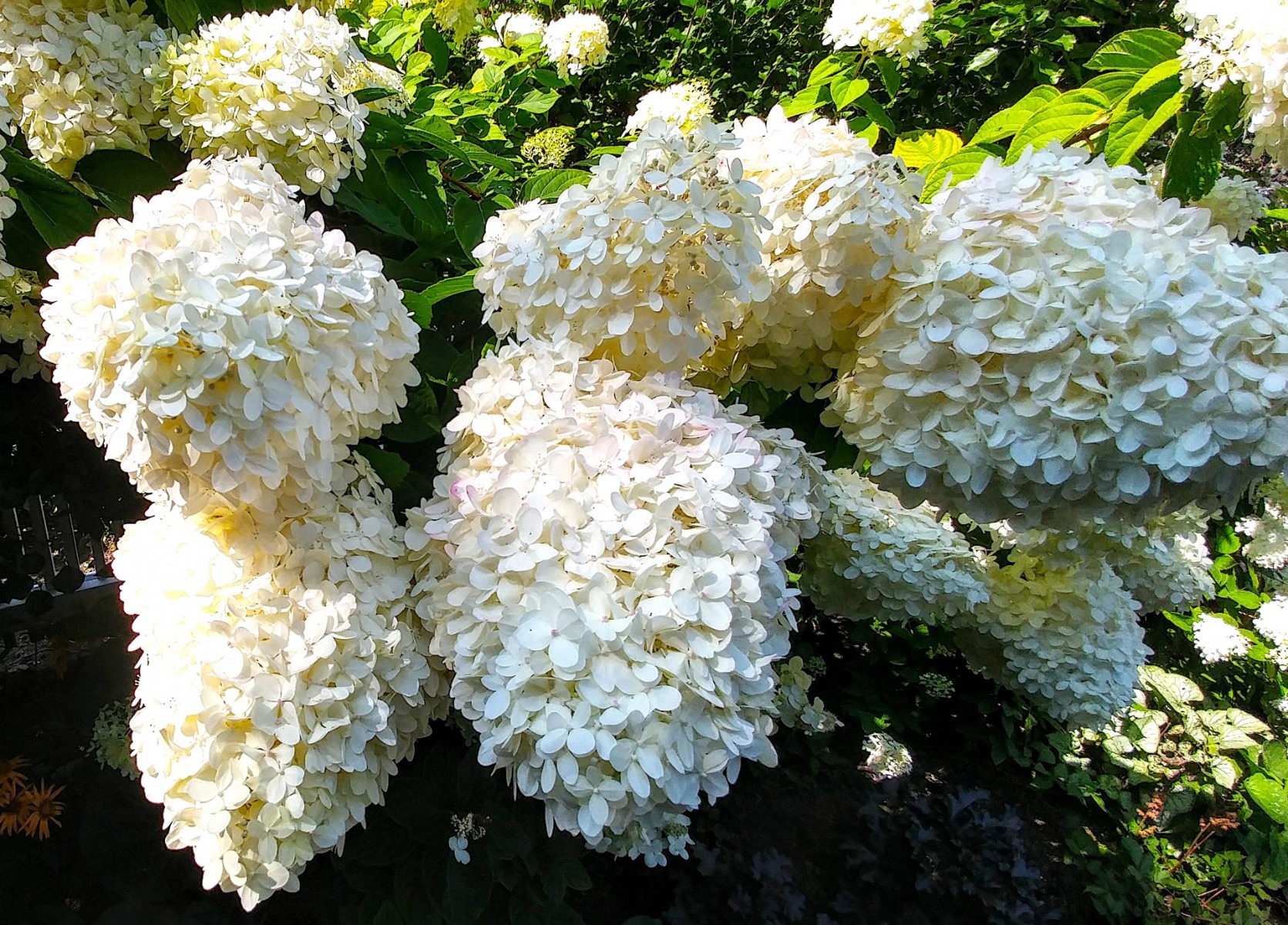
Panicle Hydrangeas
Hydrangea paniculata, also known as Panicle Hydrangea also blooms on “new wood”. Prune these flowering hydrangeas in late winter or early spring.
Some varieties that fall into this group are:
- Hydrangea paniculata ‘Bobo’
- Hydrangea pa
-
Read more »
Newly planted trees and shrubs should be watered at least 3X per week for the first year. It should be a deep watering with a hose - no irrigation or sprinkler system will sufficiently reach those deeper roots! Make sure water is cold to the touch. A hose left out in the sun will become very hot, and hot water will kill your plant material. Deep watering should be at least a slow count to thirty seconds. Make sure water stays near the trunk of the tree by keeping the water at a moderate flow; otherwise it will spread out further than you want and disturb soil or mulch around the tree.
Avoid watering leaves and foliage as this can promote fungus and disease. Plants absorb water for their leaves through their root system.
Hydrangeas are a common plant that needs especially consistent watering. They are the very first to show that they are in distress (you will see the droopy leaves on the plant). Hose watering for a slow count to twenty should do the trick every night until the droopiness is gone. Water diligently for the first year to help those roots establish!
Watering should be done until we are hit with our first heavy frost in the fall, usually at the end of October. This signals the trees to go dormant (“go to sleep”) for the winter, so they won’t have the same watering needs. However, in hot summer conditions we are all thirsty - our kids, pets, and even our plants and trees! They are living organ
-
Read more »
One of the most frequently asked questions we receive is “what is the best tree for my property?”. This requires a detailed discussion about potential long term considerations as the tree matures. This is a complicated question with many variables to consider.

Property Location
Location of the property is the first variable to be looked at because it determines the hardiness zone. Hardiness zone tells us where specific types of plant material that will survive. This takes into account factors such as minimum winter temperature, length of frost free period, summer rainfall, maximum temperature, snow cover and maximum wind speed. For reference Milton is in Zone 6a. Other communities that share this rating are Cambridge and Carlisle. Lakeshore communities tend to be warmer therefore, having a higher rating of 6b and up. This includes Oakville, Mississauga, Burlington and Hamilton. Toronto is warmer still having a rating of 7a. Communities away from the lake tend to be cooler; Georgetown and Guelph have a rating of 5b.
The Role of the Tree
The next consideration is “what do you want the tree to do?”. For purposes of analysis this is generally broken down into the following three concerns:
- Privacy
This is probably the number one con
-
Read more »
Maple Gall Mite (Vasates aceriscrummena)
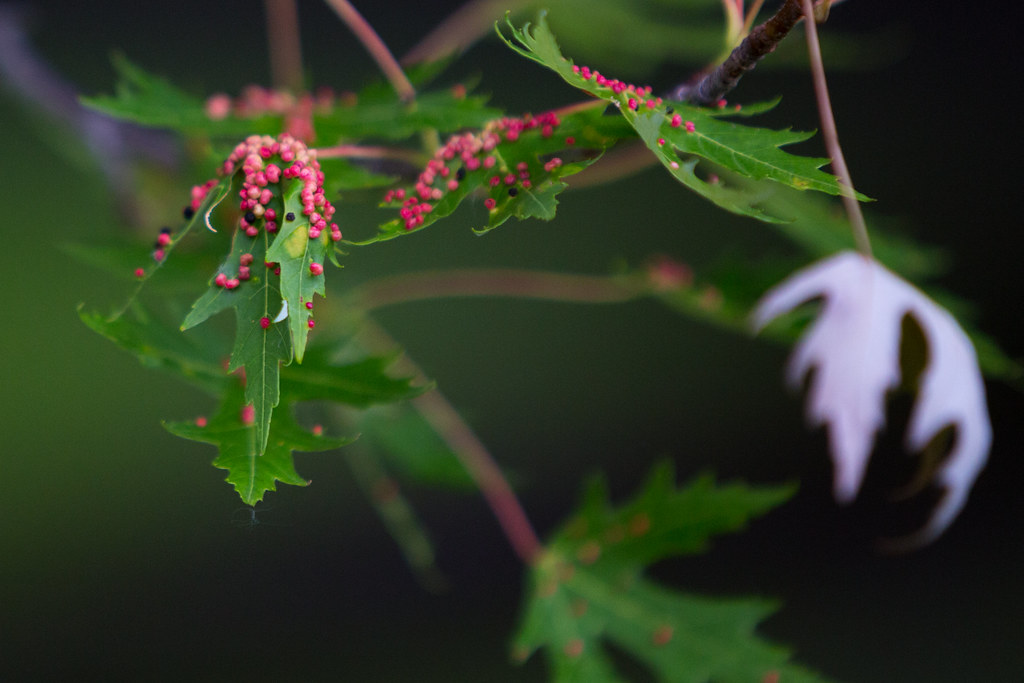
Maple Leaf Gall is a red bump or tiny bubble that appears on the top of some maple tree leaves. Most commonly affected maples include the families of: Acer x freemanii, Acer saccharum, and Acer saccharinum. It can also affect other trees such as Lindens.
A common comparison would be to consider gall like acne. Though unsightly, the good news is that gall is not detrimental to the health of your maple tree. The Ontario Ministry of Agriculture, Food, and Rural Affairs (OMAFRA) states that: “heavy infestations may completely deform leaves but seldom injure trees seriously”. Additionally, as the tree matures and establishes itself, it will outgrow this phase as the leaves become more dense and strong.
The maple is generally affected by gall in late fall. The mite hibernates in the bud of the tree during the dormant months. When the leaf opens in the spring time, the mite lays its eggs on the surface of the leaf. By the time you see the red blister, they have long gone. Therefore, treatment must be done early.
OMAFRA recommends dormant oil on the tree in the early spring, before the buds open, to kill the mite before it lays eggs. Another treatment option is to use an insecticidal soap when the leaf opens. However, many people choose to forego tre
-
Read more »
Do you have dead patches of grass? Critters (skunks, raccoons) digging up your lawn? Do you see grubs in your garden?
Lawn grubs are the larval stage of June bugs, Japanese Beetles, European Chafer, Craneflies, etc. Nematodes are living organisms—natural parasites which are microscopic worms that occur naturally in the soil. Nematodes kill off grubs. It is 100% safe for people, pets, plants and earthworms.
Grubs start feeding on your lawn in April and then again in August. Application of the Nematodes are generally done in May or when the soil temperature is 10°C or higher. A second application should be applied in the fall (between August to October) to eliminate new grubs that may have hatched in the summer.
Nematodes generally control over 250 insect pests.
Most Nematodes are applied as follows:
- Nematodes are susceptible to the UV rays. Do not apply in direct sunlight (in the evening or on cloudy days are best).
- Water the lawn deeply (its best when it’s raining). Nematodes move easier through the soil when it’s moist.
- Keep your lawn moist for 10 days after application.
Nematodes have a cycle. We recommend that you do three applications as follows to get rid of your grubs:
- 1st application = May or June
- 2nd application= August or September or October
-
Read more »
Landscaping around swimming pools has a unique set of challenges due to the specific set of requirements associated with a pool. Swimming pools often create their own microclimates such as raised humidity levels and intense sunlight reflected from concrete paving. Plant material can be splashed with chlorine, salt water and other chemicals. The key is to understand the micro climate and find the plant material that can withstand it while looking good and being easy to maintain.
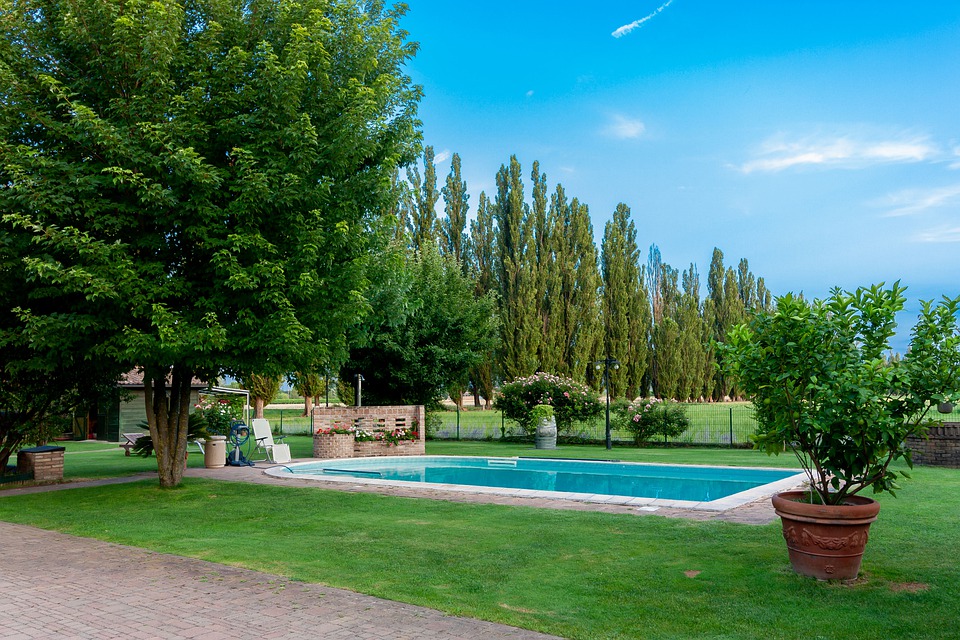
Selecting the appropriate plant material can be broken down using the following factors:
- Privacy:
This tends to be the primary issue for many clients as pool areas are often viewed as sanctuaries, places where someone can escape from the outside world. It may be desirable to block a neighbor’s view, limit noise or hide an ugly view adjacent to the property. The two primary elements to achieve this are trees and hedges. A properly placed tree can block an intrusive deck or upper window. Hot tubs are often incorporated as poolside elements and see use throughout the winter months, thus requiring evergreen screening. Cedar hedges provide a natural fence to enclose the planted space and can provide shade as well as privacy. Emerald Cedars are a popular choice.
-
Read more »
Common Name: Lenten Rose, Christmas Rose, Hellebore
Latin Name: Helleborus
Likes: Hellebores will tolerate most soils, but do best in semi-shade. They won’t tolerate drying out in full sun and need a protected location from wind damage.
Fun Fact: The Hellebore's 'flowers' aren’t petals but sepals which are leaves that have grown to look like petals of a flower. Their job is to protect the actual flower, which is at the center the actual petals are those weird hollow things on the outer rim of the flower.
Why we recommend it: Very early bloomer that thrives in the cold temperatures when gardeners are impatient for spring but other flowers are still dormant. Looks great with early spring bulbs
Watch out for: Aphids

Common Name: Columbine
Latin Name: Aquilegia
Likes: Columbine plants aren’t too picky about soil as long it’s well draining and not too dry. While they enjoy full sun in most areas if it’s a hot area they would probably appreciate some mulch to keep their roots cool.
Fun Fact: its Latin name comes from ‘Aquila’ which means eagle, as the petals resemble an eagle’s claw. The common name is Columbine, whic
-
Read more »
National Tree Day will serve as a celebration for all Canadians to appreciate the great benefits that trees provide us - clean air, wildlife habitat, reducing energy demand and connecting with nature.
-
Read more »
This small backyard design incorporates useable space with a modern feel. A flagstone pathway leads from the side gate towards an interlock patio and a small gazebo. A mix of smaller trees fills the space vertically while shrubs and perennials fill the lower areas with different colours, textures, and bloom times. This design was developed to satisfy the client’s desires for many features while maximizing the amount of space in the yard. Simple displays of reliable, colourful shrubs and perennials give the rear fence a modern feel, as a the garden bed closer to the home features some of the client’s favourite plants. Here, a yard of approximately 60’ x 30’ is split into sections for a large entertainment area, turf for play-space, and a private enclave for evening enjoyment. This design plays off of some existing elements in other nearby yards and offers strategically placed deciduous and evergreen trees to create a more private environment. Some features include an interlock pathway with Armourstone steps, an interlock patio with an Armourstone wall for a garden edge border, and a colourful mix of shrubs, perennials, and small trees. Trees in this design were chosen for space requirements, visual screening for privacy, and an interesting mix of fall colour display.
-
Read more »
It is common for evergreens to “flag” – usually in late summer to early autumn. Evergreen flagging is when tiny parts of the evergreen’s foliage turn yellow, orange, or slightly brown – often in a very spotty or patchy fashion. This is very different than when a evergreen actually dies. In that case, the tree would be almost completely brown from top to bottom.
To compare, evergreen flagging can be thought of as the equivalent to leaves changing colour and falling off of deciduous trees in the fall. It’s perfectly natural and in most cases it is not indicative of any health concerns for your tree. All evergreens lose foliage. If you walk through a local park that has mature evergreens, you will most certainly see evidence of needle/foliage loss at the base.
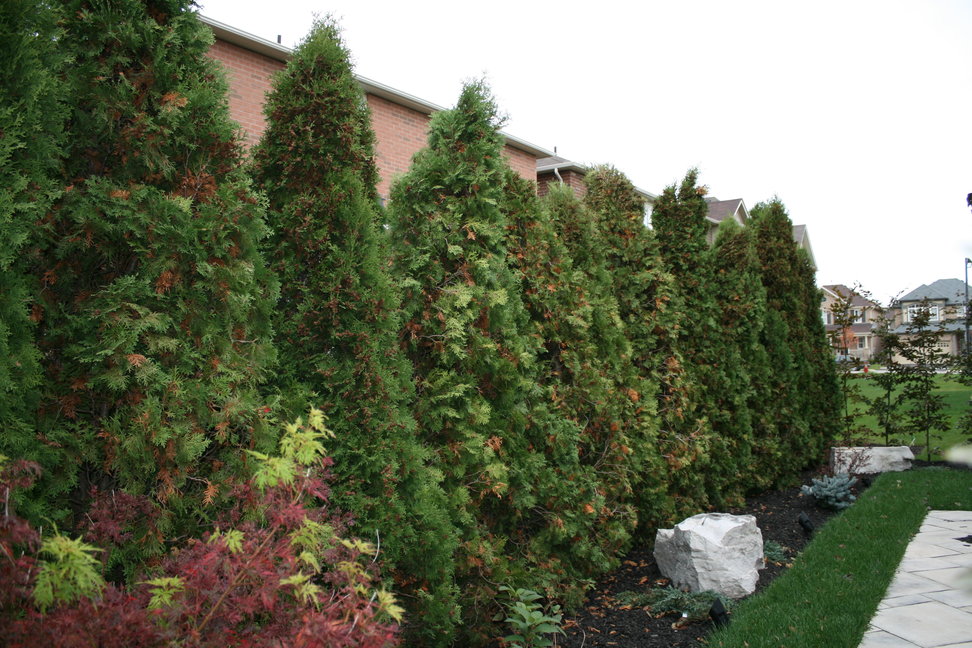
The cause of this is generally attributed to a bit of stress on the tree. This makes evergreen flagging especially common after:
- Hot/dry summers
- Cold but sunny winters (lack of overcast conditions)
- The year following transplant
This foliage affected ge


